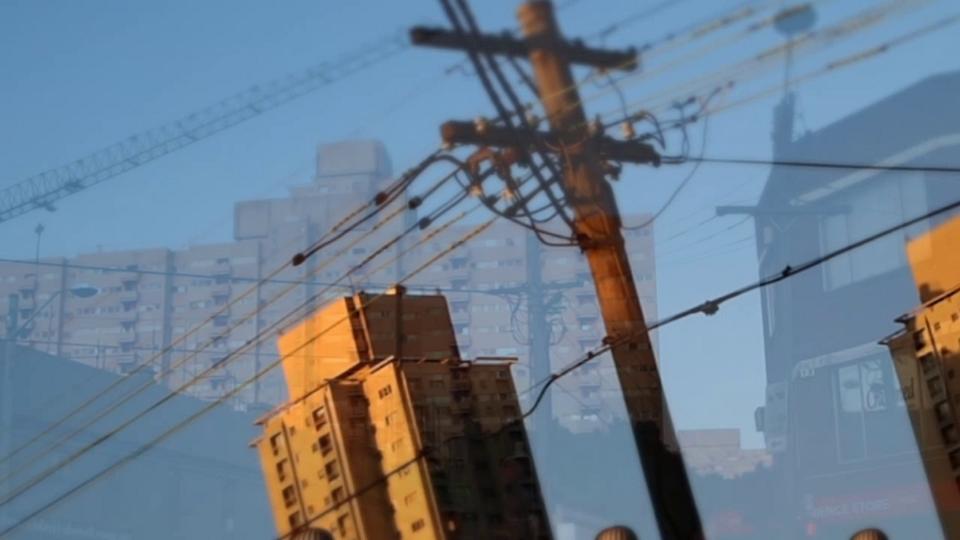Rewind 10 days earlier and it’s a far happier and hopeful time. It’s just a few days after Souths have broken their hoodoo, put away the Melbourne Storm to give themselves a two-week grand final-bound break. This unusual hiatus is a perfect time to touch base with two people who in different ways have documented the fall and the rise of Souths over the years.
While there is a lot more to songwriter Perry Keyes than his classic, “The Day John Sattler Broke His Jaw”, his songs about growing up in the concrete playgrounds of The Block and Botany Road are layered with references to the red and green.
Mark Courtney’s book, Moving the Goalposts, is perhaps one of the finest books written about Souths, a personal account of his enduring friendship with footy mate Greg and the dark years after Souths were dismissed from the competition. His Book of Feuds is much referred to by media as a chronicle of tribalism and long-held grudges that make rugby league and the folklore of Souths.
It’s only fitting that we meet over beers and steaks at the legendary Cauliflower Hotel on Botany Road. A favourite haunt of South Sydney players, the walls are adorned with photos of the stars of Souths’ golden era: Bob McCarthy on the burst, Lurch O’Neill launching himself through the ruck and Jimmy Lisle’s stylish dive tackle in cover defence.
Without any planning, the conversation has a chronology to it. Starting in the 60s the conversation winds its way through the 70s, 80s until somehow two hours later we arrive at the present day.
Both Keyes and Courtney’s recollections are amazing. Famous players like Coote, Simms and Coleman are of course discussed, but the more obscure careers of players such as Tommy Moylan, Dennis “Slugger” Lee and “The Flying Garfish” Danny Loftus are given equal measure. Childhood trips to rain-drenched Sunday afternoon games against Easts, Parramatta and others are etched indelibly in their memories. It’s a joyful trip for a couple of tragics. “I hope you and I end up in the same nursing home,” Perry muses.
Although it was not known at that time that Souths would meet Manly in the last step towards a Grand Final, the arch rival is ironically a central topic of the discussion. On the agenda are Johnny Sattler’s jaw, Malcolm Reilly and George Piggins’ toe-to-toe battle at the SCG, and of course Big Bill Hardy’s two-try effort in beating a Manly team full of superstars in 1984.
Both my drinking partners would be the first to admit that despite these golden moments it’s been a tough, difficult journey since 1971. The past few years with Souths back in the final four is foreign territory. The talk turns to the Souths of today and what this current team means to Redfern and the community.
“I do notice it around here and certainly the flats of Waterloo,” says Perry. “You see more kids wearing Souths jerseys and playing footy. You see more people, from Fred the Wino wearing a South Sydney cap, to folk in their four-wheel drives heading back to Alexandria with white bunnies on their bumper-bars.”
Fast forward again to the grand final qualifier and sad-faced Souths fans are still filing out into the atrium of ANZ Stadium after once again being belted by “bloody’ Manly. Their crestfallen demeanour is a totally understandable reaction to the unexpected loss.
But as the fans walk through the atrium something happens that stops them in their tracks. On the rafters above a large array of Burrow members assemble and begin working through their repertoire of songs in top voice, accompanied by raucous rattling and drumming of the stadium railings. It’s riveting, passionate and totally compelling. The crowd below is silent to begin with and then slowly joins in the chorus: “I know I am, I’m sure I am, South Sydney ’til I die.”
It’s a timely reminder that the spirit of South Sydney endures, whatever the situation or setback, and, through the tireless voices of the Burrow, the songs and stories of Perry Keyes and Mark Courtney, and the unwavering support and dreams of all the rest, South Sydney marches on.





